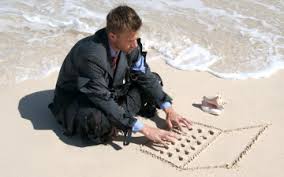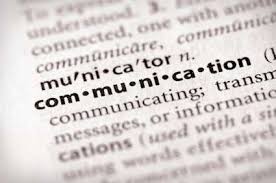 Last week Entrepreneur.com featured a great article on hiring remote teams. The article, written by David and Carrie McKeegan has a wonderful list of tips for remote hiring that are relevant for in-house hires as well. Since AgilityFeat is a company made up of people working remotely, the article got me thinking about our learnings as a company hiring remote employees for the past few years. Here’s my short list of best practices to add to the ones suggested in the article.
Last week Entrepreneur.com featured a great article on hiring remote teams. The article, written by David and Carrie McKeegan has a wonderful list of tips for remote hiring that are relevant for in-house hires as well. Since AgilityFeat is a company made up of people working remotely, the article got me thinking about our learnings as a company hiring remote employees for the past few years. Here’s my short list of best practices to add to the ones suggested in the article.
Hire People with experience working remotely
The McKeegan article first tip is to hire “only people with significant work experience”. We might tweak that to say hire only people with significant “remote” work experience. Remote work, while attactive to many is not for everyone. We have found that a good number of the pitfalls of remote working (poor communication, lack of alignment on priorities, late delivery) are largely avoided by those who have experience working in a remote environment. Candidates who have previously faced the challenges of remote work are not only more attuned to the needs of a remote working arrangement but they have most likely adapted to the nuances in workflow, availabilty and communication that exist in a remote working environment.
Find out where people work
 One of the allures of working remotely is the ability to work from anywhere. And it’s true, the flexibility to work from anywhere is an enormous benefit to employees and employers alike. However, one needs a plan when they work remotely so we ask perspective hires about where they work. Most often, the people we work with have a dedicated space in their home for working or have a co-working space that they go to, at least a few days a week. Again, experience is a good teacher of the potential drag on productivity that can come from distractions in the house or in public places. This doesn’t mean that it is impossible to do good work can’t from a variety environments (to the contrary, we have teammates doing great work from the beach, from the mountains or from the coffee shop). However, a mature remote employee has learned the value of a designated space to work in their home that is distraction free. Pro-tip: video interviews can help here as you can see a potential candidate’s work environment.
One of the allures of working remotely is the ability to work from anywhere. And it’s true, the flexibility to work from anywhere is an enormous benefit to employees and employers alike. However, one needs a plan when they work remotely so we ask perspective hires about where they work. Most often, the people we work with have a dedicated space in their home for working or have a co-working space that they go to, at least a few days a week. Again, experience is a good teacher of the potential drag on productivity that can come from distractions in the house or in public places. This doesn’t mean that it is impossible to do good work can’t from a variety environments (to the contrary, we have teammates doing great work from the beach, from the mountains or from the coffee shop). However, a mature remote employee has learned the value of a designated space to work in their home that is distraction free. Pro-tip: video interviews can help here as you can see a potential candidate’s work environment.
Test for communication skills
 Having great communication skills is not just a remote hiring need, it is relevant for in house hires as well. However, since remote working relationships lack the physical context of interactions in an office, a premium must be placed on communication skills for remote teams. At AgilityFeat, we like to get to know candidates in a variety of contexts. The first is written, we look to see how the candidate presents themselves in a cover letter and resume as well as in e-mail. Much of our communication is digital so it is important than a candidate possess an excellent ability to communicate their views in writing as well as to comprehend the written communication of others (not the same thing).
Having great communication skills is not just a remote hiring need, it is relevant for in house hires as well. However, since remote working relationships lack the physical context of interactions in an office, a premium must be placed on communication skills for remote teams. At AgilityFeat, we like to get to know candidates in a variety of contexts. The first is written, we look to see how the candidate presents themselves in a cover letter and resume as well as in e-mail. Much of our communication is digital so it is important than a candidate possess an excellent ability to communicate their views in writing as well as to comprehend the written communication of others (not the same thing).
Next, we like to have candidates meet with different members of our team. Some of the interviews are done one on one while other interviews are done with a group of people to observe how a candidate interacts in different settings. We are looking for comfort and confidence communicating one on one as well as in a group setting. Questions like “how do you prefer to communicate” can give you an insight into whether or not a potential hire is the right fit for your organization or project.
Additionally, we’re looking for candidates who are simultaneously self learners as well as individuals who comfortable asking questions when they do not understand something. As a remote software development company, certain industries or businesses may be new to our teammates. We select for people who are inquisitive and comfortable asking questions because we are expecting them to work independently for the most part. By asking candidates about how they learn and what they do to improve their skills sets, you can learn a great deal about how someone will react when faced with a new technology, business or situation. Because of this, we look for candidates who can demonstrate a track record for initiative, independent learning and comfort asking questions.
In the end, hiring for a remote postion is alot like hiring for an in-house employee. The ability to recruit the skills you need from a person who is a great cultural fit is critical to success. However, in a remote working situation, the visual clues on office etiquette and workflow are removed as tools that can help a new hire acclimate. As a result, getting hires right the first time is even more important. In our next post, we’ll look as how to help onboard in a remote working environment.
In the meantime, tell me about your tips for hiring remote employees? Drop me a line.








